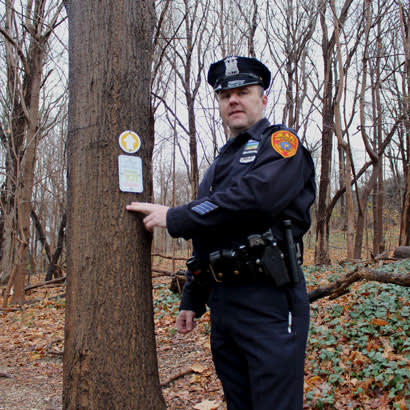
When heading out for a hike on a trail, how many of us think about the importance of being able to communicate our whereabouts along that trail, should an emergency arise? A few years ago, such an emergency occurred on a trail in Cold Spring Harbor State Park, in the Town of Huntington in Suffolk County, New York, when a man fainted while hiking with his wife. She called 911 but was unable to communicate their location on the trail. Responders did reach the couple in time, but only after the fire department had dispatched two ambulances to enter at different points along the trail.
Suffolk County police officer James Garside, an advance medical technician who patrols the park, realized a more efficient way was needed to respond to such emergencies. He led an initiative to install 15 numbered markers along the 1.14-mile trail, which covers challenging, unpaved terrain with steep inclines that can increase the chance for injury. “Each number is linked to the exact longitude/latitude coordinates. With the use of GIS mapping, we are able to pinpoint the caller’s location,” Garside explains. “Emergency staff did a walk-through to test the system and obtained permission to access the trail via residential property where needed.”
On October 15, 2017, the new system was put to the test when a 47-year-old man, hiking with his wife, experienced a heart attack halfway along the trail. This time, when they received the call, emergency responders could determine his exact location and use a predetermined point-of-entry to the trail, which was through a resident’s yard, to be at his side within minutes. Garside adds, “Responders were able to transmit cardiac data from the scene to hospital personnel, who were then able to call in the necessary medical staff to prepare for the ambulance’s arrival. The time saved was critical.”
Trail markers are small, unassuming and relatively inexpensive but can convey vital, life-saving information when time is of the essence. Consider adding markers to park trails near you and be on the lookout during your next hike.
Suzanne Nathan is NRPA’s Media Specialist

